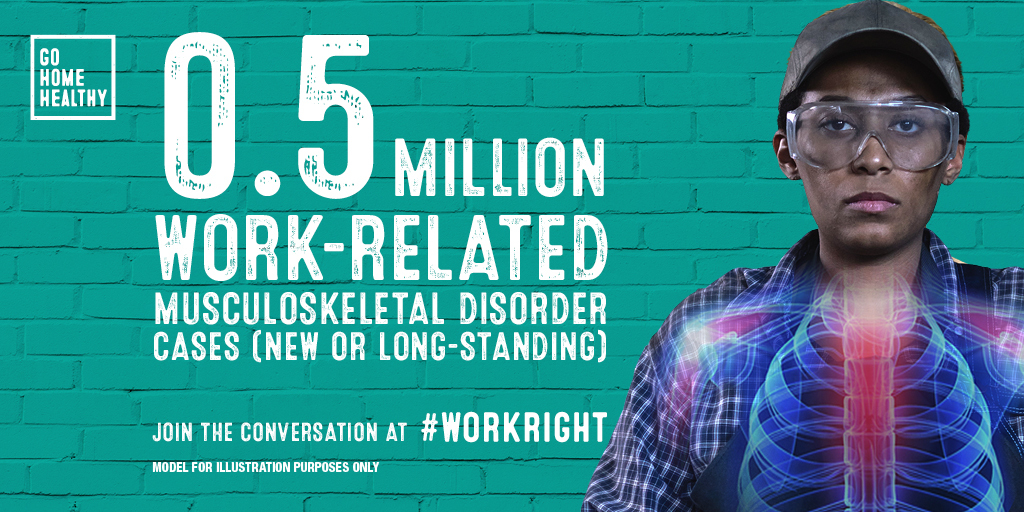
Kelly Rose
Editor

Kelly Rose
Editor
Management of musculoskeletal risks from mobile devices – phones, tablets and laptops – offer interesting prospects, writes Ed Milnes, chartered ergonomist & human factors specialist, Guildford Ergonomics.
Mobile devices in their ‘natural form’ are designed for convenience and portability, not for prolonged work. Increasingly we are seeing upper limb and neck issues – from low-level discomfort to conditions such as De Quervain’s (tenosynovitis) and employers are keen to do what they can to manage these issues.
When we think about practical tips to reduce MSD risks from mobile devices, often the first thing that comes to mind is physical alterations/modifications such as external keyboards, styluses, stands to raise screen height etc. These can be helpful, but they are likely to be most effective when they sit within a behaviour-management framework.
The hierarchy of risk control is still a useful starting point; step one - elimination of risk / removal of hazard.
Practical tip 1: Consider - do people actually need to be using their mobile devices intensively or for long periods or can the work be planned another way, avoiding prolonged device use?
For example, it is useful for people to be able to check emails and messages on-the-go, but longer periods of data entry are typically better suited to more conventional DSE, which leads to the next tip:
Practical tip 2: Set clear boundaries and expectations for device use – type of work to be done and periods of use.
Depending on how ‘locked-down’ devices are, there is scope for creeping increase in use, simply because they are a familiar format, convenient and increasingly powerful/capable to do what we want them to. Setting clear expectations is one way of keeping use within reasonable levels.
You could even consider steps like the ‘Right to disconnect’ – setting periods when there is no formal expectation to check devices. Although this kind of approach needs to avoid being draconian and should balanced against employees’ needs for flexibility.
Mobile devices are often provided to staff who have mobile/field-based roles. The convenience of mobile devices helps them manage their time and workflow more effectively. However it should still be discussed with them, as part of a DSE assessment how they can limit their device use.
We need to acknowledge though, that in many cases, efficient work is reliant on device use, hence the next tip.
Practical tip 3: Select suitable equipment for the work being done.
For example, in roles where people are holding the devices for long periods whilst using them (such as a healthcare environment), consider the size and weight of the device. Or consider if people need larger screens - their tasks may be visual or require quick scanning of larger amounts of data – in which case the screen size requirement needs to be balanced against device weight.
Even with effective device selection, any unavoidable prolonged use should be supported with suitable equipment.
Practical tip 4: Provide equipment to improve working ergonomics.
For laptops in prolonged use, lightweight stands are recommended in combination with lightweight portable keyboards. An ideal scenario is to issue mobile workers with detachables, so only the stand needs to be carried additionally.
For tablets, prolonged users should also use a stand – preferably a riser that actually lifts the screen – rather than a case stand. This should be combined with a keyboard and – for Android and Windows users – an input device.
Where tablets are held for long periods, a comfortable handle / grip should be provided, and a strap fitted to allow users to stop holding it.
Phones can also be connected with keyboards – for any longer typing / data entry. They can also be placed on stands and risers to free the hands and improve neck posture. Although the small screen size still limits practical use. Styluses also offer a cheap and effective way of helping users vary their wrist posture during direct use.
Practical tip 5: Provide training in the risks and risk management.
Employers should provide guidance and training in safe use, and appropriate use of supplementary equipment.
Advice such as holding the screen up with arms supported where possible, safe typing techniques, keeping responses / typing short, use of dictation facilities and styluses, regular checking of bags for unnecessary weight. These are all things that people don’t necessarily think of independently, because we are so used to using these devices every day, and we don’t necessarily associate our aches and pains with how we are interacting with them.
Training has a threefold impact: helping safer work, encouraging safer use of devices at home (which can itself have an impact on health at work), and putting out information that can be passed on to future generations of workers.
This third point is perhaps the most important, and it offers employers a valuable opportunity to use mobile device training to contribute to Corporate Social Responsibility; benefitting the long-term health of the wider population.
HSE will host the Work-Related Musculoskeletal Disorders Summit on 21 March 2018 at the QEII in London.
This summit will explain what HSE is doing in this area, what you can do about MSDs and what current scientific thinking is starting to shape new and re-energised approaches to help us. You can book your place at https://www.hsl.gov.uk/msd-summit

5N.1 Redgrave Court
Merton Road
Bootle
L20 7HS
UNITED KINGDOM
0151 951 3758